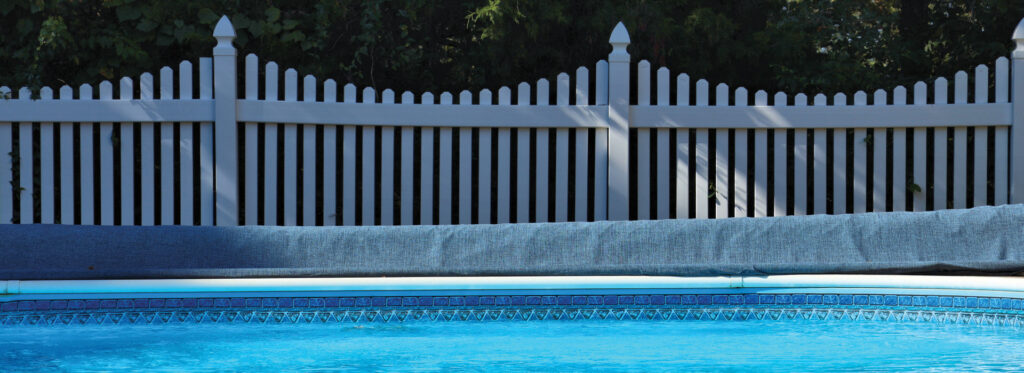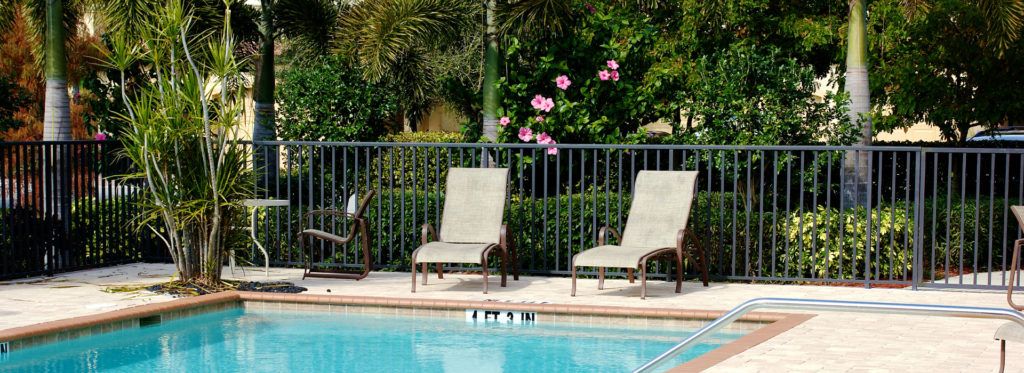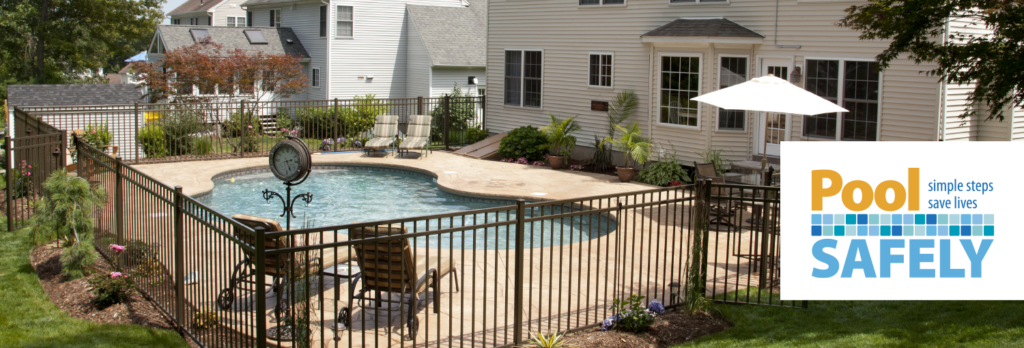How to choose a pool fence for your South Florida home
Secure your pool with premium pool fencing
Owning a pool in your South Florida home is undoubtedly a luxury, providing a refreshing retreat and a place to create lasting memories. However, it’s essential to prioritize safety when it comes to pool ownership. Installing a pool fence at your South Florida home is a critical measure to ensure the well-being of your loved ones and comply with local regulations.
With the warm climate and active outdoor lifestyle in South Florida, a pool fence acts as a vital barrier, preventing accidents and promoting peace of mind. By investing in a pool fence, you not only enhance the safety of your pool area but also create a secure environment for your family and guests to enjoy the beauty of South Florida to the fullest.
Choosing a fence material for your South Florida pool
When it comes to choosing pool fencing materials that meet the requirements outlined in previous responses, two popular options are vinyl and aluminum. Both vinyl and aluminum fences offer durability, low maintenance, and aesthetic appeal while adhering to the necessary safety standards. Let’s explore the features and benefits of each material:

Vinyl Pool Fencing
Vinyl fences are known for their versatility and long-lasting performance. They are available in various styles and colors, allowing homeowners to find a design that complements their pool area. Here’s how vinyl fencing meets the requirements:
- Height and Solid Construction: Vinyl fences can be customized to meet the minimum height requirement of 48 inches. Their solid construction ensures that there are no gaps or openings that could allow unauthorized access to the pool area.
- Non-Climbable Design: Vinyl fences are designed to be non-climbable, with smooth surfaces and no horizontal rails that could facilitate climbing.
- Self-Closing Gates: Vinyl gates can be equipped with self-closing hinges and latches, ensuring they automatically close and latch securely when not in use.
- Maintenance and Durability: Vinyl fences are resistant to rust, rot, and fading. They require minimal maintenance, usually limited to occasional cleaning with soap and water.

Aluminum Pool Fencing
Aluminum fences are popular for their strength, versatility, and aesthetic appeal. They offer a sleek and modern look to pool areas. Let’s see how aluminum fencing meets the requirements:
- Height and Sturdy Construction: Aluminum fences can be designed to meet the minimum height requirement of 48 inches. They feature strong construction that ensures the fence remains secure and meets safety standards.
- Non-Climbable Design: Aluminum fences can be customized with picket styles that discourage climbing. By choosing options with vertical pickets or closely spaced pickets, the fence becomes difficult to climb.
- Self-Closing Gates: Aluminum gates can be equipped with self-closing mechanisms and reliable latches to ensure they automatically close and latch when not in use.
- Low Maintenance: Aluminum fences are highly resistant to corrosion, making them ideal for pool environments. They require minimal maintenance and can be easily cleaned with soap and water.
Both vinyl and aluminum pool fences offer benefits in terms of appearance, durability, and compliance with safety requirements. The choice between the two ultimately depends on personal preferences and the desired aesthetic for the pool area. It’s important to ensure that the chosen fence style, height, and gate design align with the specific codes and regulations in your local area to guarantee a compliant and safe pool fence installation.
What are ICC pool code requirements for pool fences in South Florida?
Understanding the ICC Pool Fence Code can be a confusing task for homeowners and DIY enthusiasts. The multitude of acronyms like BOCA, ICC, IBC, and IRC can make the process overwhelming. However, it’s essential not to give up. In this article, we will guide you on where to find the list of pool fence codes and provide some background information to clarify the confusion.
The BOCA Pool Fence Code is often mentioned when discussing pool fences. BOCA, which stands for Building Officials and Code Administrators, was a regional building association that established construction standards from 1950 to 1994. In 1994, BOCA merged with two other organizations, namely SBCCI and ICBO, forming the International Code Council (ICC). Despite the name change, the pool barrier code is still commonly referred to as the BOCA Code.
The ICC, a non-profit organization, emerged from the need for a nationally uniform set of building standards. It was established in 1994 through the consolidation of BOCA, SBCCI, and ICBO. In 2000, the ICC published the International Building Code (IBC), a comprehensive collection of codes, standards, and guidelines covering various aspects of construction, including plumbing and fire safety.
Although the ICC is not a government entity, its codes hold significance because they are widely adopted by state and local jurisdictions and can be enforced. In fact, your local building codes likely derive from the IBC, possibly with additional rules specific to your area. You can find more information about the ICC on their website.
For the purpose of this article, we are primarily concerned with a small section of the IBC called Appendix G in the International Residential Code, specifically SECTION AG105 BARRIER REQUIREMENTS. This section outlines the codes related to outdoor residential pool barriers, including fences and other barriers like stone or masonry walls. The objective of these codes is to minimize the risk of drowning and injuries by restricting unsupervised access, particularly by children.
Here’s a summary of the most relevant codes:
- Installed pool fences must have a minimum height of 48 inches from the finished ground level, measured along the outside of the fence. There should be no more than a 2-inch gap between the bottom of the fence and the ground.
- The fence must prevent objects larger than 4 inches in diameter from passing through its openings.
- The fence or barrier should not be climbable. If it is made of stone or brick, it should not have protrusions or indentations that aid climbing. Additionally, it should be positioned far enough from permanent structures to prevent them from assisting climbing.
- Pedestrian pool fence gates must be self-closing, open outward from the pool, and have a self-latching/locking device. Gates not intended for pedestrian use should have a self-latching device.
- Chain link pool fences should have a mesh with openings no larger than 2 1/4 inches. However, if privacy slats are installed at the top or bottom, reducing the opening to 1 3/4 inches or less, larger mesh openings are acceptable.
- Lattice-type fences with diagonal members should not have openings larger than 1 3/4 inches between the diagonals.
It’s important to note that a pool fence is a crucial safety measure against accidental drownings but not the sole precautionary step. For comprehensive information on swimming pool safety, visit the Consumer Product Safety Commission’s website.
To ensure compliance with the ICC codes, it’s recommended to check with your local building department to verify any additional requirements specific to your area. Fortunately, most fence manufacturers offer pre-fabricated fence panels that meet ICC Codes and often align with local codes. By following the manufacturer’s instructions and choosing

More information on pool fencing:
The PDF document titled “CPSC Safety Barriers” available at https://www.floridahealth.gov/environmental-health/swimming-pools/_documents/cpsc-safety-barriers.pdf provides important information about safety barriers for swimming pools as recommended by the Consumer Product Safety Commission (CPSC). The document emphasizes the significance of installing effective barriers to prevent drowning incidents, especially involving young children. Here’s a summary of the key points covered in the document:
- Importance of Safety Barriers: Safety barriers around pools are crucial for preventing accidental drownings. They serve as a physical obstacle to restrict access to the pool area, particularly for unsupervised children.
- Types of Barriers: The document highlights various types of barriers that can be used to enhance pool safety, including fences, walls, and covers. It emphasizes that a combination of barriers can provide optimal protection.
- Fence Requirements: When installing a fence as a safety barrier, it should be at least 4 feet (48 inches) high and have self-closing and self-latching gates. The gate latch mechanism should be positioned out of reach of young children.
- Fence Openings and Materials: The fence should not have any openings that would allow a 4-inch diameter sphere to pass through. The material used for the fence should be sturdy and difficult to climb.
- Wall Requirements: If using a wall as a barrier, it should have no openings, protrusions, or indentations that could facilitate climbing. The wall should be a minimum of 4 feet (48 inches) in height.
- Safety Covers: Safety covers that meet the standards set by the American Society for Testing and Materials (ASTM) are another effective barrier option. These covers should be able to withstand a child’s weight and not allow gaps or openings that could allow access to the pool.
- Alarms and Door/Window Locks: Additional safety measures, such as pool alarms that alert when someone enters the pool area, and door/window locks that restrict access to the pool, are strongly recommended.
- Regular Maintenance: It is important to regularly inspect and maintain safety barriers to ensure they are in good working condition. Any necessary repairs or replacements should be promptly addressed.
- Pool Supervision: While safety barriers provide an important layer of protection, they should not replace active adult supervision. Constant adult supervision is critical to ensuring pool safety.
- Pool Safety Education: The document emphasizes the need for pool safety education to create awareness and promote responsible behavior around pools. It encourages individuals to learn CPR and obtain water safety training.
Overall, the CPSC Safety Barriers document provides valuable guidance on the selection, installation, and maintenance of safety barriers for swimming pools, with the goal of preventing drowning incidents and ensuring pool safety, particularly for children.
Choose the right pool fence for your South Florida home
In conclusion, the importance of having a pool fence installed at your South Florida home cannot be overstated. Whether you reside in Broward County, Palm Beach County, Fort Lauderdale, Coral Springs, Boca Raton, Pompano Beach, Delray Beach, Boynton Beach, or Hollywood, Florida, prioritizing pool safety is crucial. By partnering with a reputable fence company that specializes in pool fence installation, you can ensure compliance with local regulations while creating a secure and enjoyable environment for your family and guests.
From vinyl to aluminum, there are various options available that meet the necessary requirements, providing both aesthetic appeal and durability. Don’t compromise on the safety of your loved ones—invest in a quality pool fence and enjoy the peace of mind that comes with knowing you’ve taken every precaution to protect those who matter most.